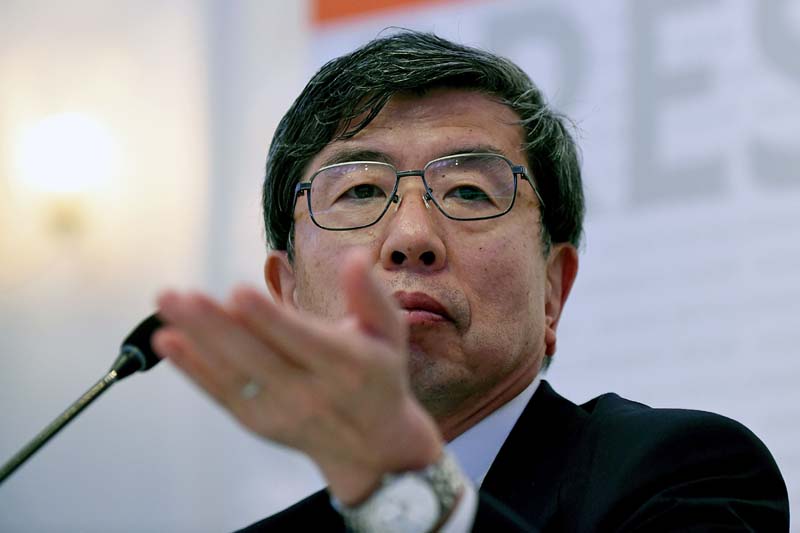ADB board of governors meeting concludes
Frankfurt, May 6
The Asian Development Bank (ADB) has said it will adopt all necessary measures to speed up project implementation and accelerate disbursement in future, during conclusion of the 49th annual meeting of Board of Governors here on Thursday.
The commitment comes as governors expressed concerns regarding the declining disbursement of ADB’s assistance. “Unless loans and grants are disbursed, they have no impact on development. Thus, we are working hard to improve project readiness,” said Takehiko Nakao, president of ADB.
For small island countries in the Pacific, ADB has simplified system of project implementation while adapting to local conditions.
Nepal has also been facing similar problems of low disbursement of ADB assistance. Of the total of $1.7 billion of the pledged assistance, around 72 per cent has not been utilised yet. ADB President Nakao said that ADB has streamlined its procurement review process to speed up project implementation. “We will make greater use of country systems, and improve the quality of consultants and contractors,” he said.
As Asia has been emerging as growth-engine for global economy with an average of over five per cent growth every year, ADB President Nakao emphasised on more investment in infrastructure, technology, human capital along with sound macroeconomic policies and efficient financial markets in the countries of Asia-Pacific in order to realise full growth potential of the region.
- READ ALSO: Grant under green climate financing
Similarly, ADB will be able to expand its annual lending and grant approvals by over 50 per cent by 2020 through the merger of ADB’s funds for poorer countries (Asian Development Fund) and developing countries (Ordinary Capital Resources), which will be effective from 2017. ADB loan and grant approvals were at a record $16.3 billion in 2015, an increase of 21 per cent over 2014 levels.
ADB has also received commitment of $2.5 billion from 32 donors for the operation of ADF 12 (2017 to 2020). Apart from the donor’s money ADF 12 replenishment will also comprise net income transfers from ADB’s OCR worth $1 billion and income from ADF liquidity investments worth $0.2 billion. The replenishment amounting to a total of $3.8 billion is expected to increase further over the next few months as more donors confirm their pledges, according to ADB.
“The new ADF comes with a number of innovative features, including doubling of minimum allocation for small countries, strengthened support for disaster risk management, and regional health security.”
ADB grant support of $3.3 billion to poorest countries represents an increase of 70 per cent as compared to previous four years. ADF grant together with ADB’s concessional loans will deliver more than $16 billion in assistance to poor countries during the same period, which is an increase of more than 40 per cent. Similarly assistance to small island countries will rise by over 150 per cent.
More recently, ADB has expressed commitment to raise its lending level to $500 million from around $275 million per annum to Nepal.
ADB has said that it may seek for a capital increase in medium term to respond to huge and growing financing needs and to reflect changing economic circumstances in the region. However, the decision will be made after observing the need of financing of next few years.
ADB will mark its golden jubilee next year and its 50th annual meeting of Board of Governors will be held in Yokohama in Japan with the theme of ‘Building together the prosperity of Asia’.


